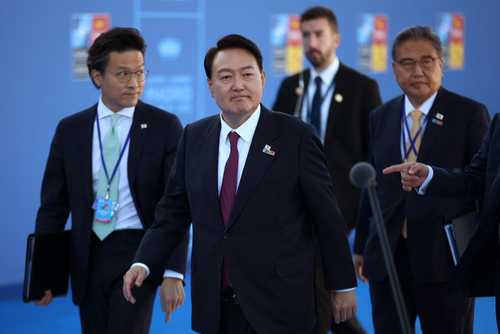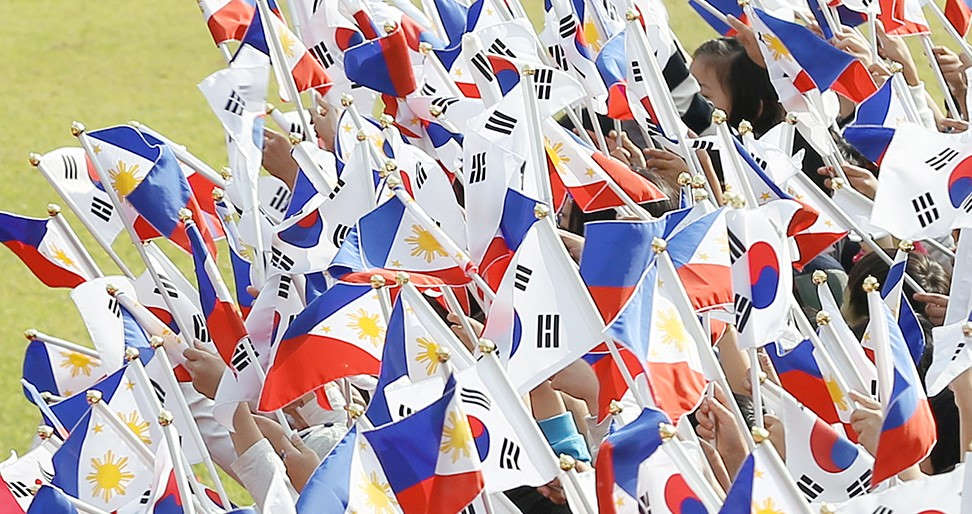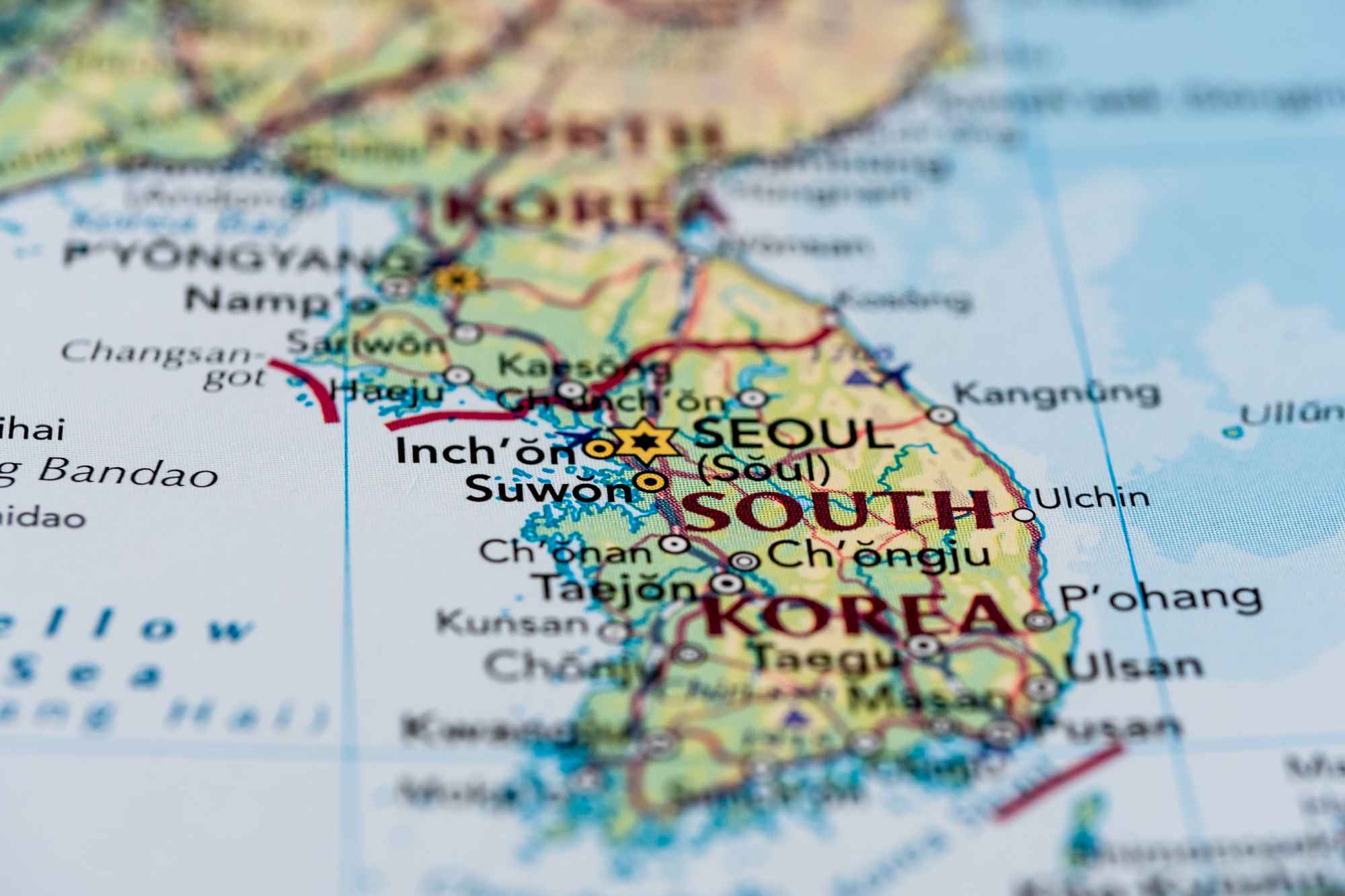On April 26, US President Joe Biden welcomed his South Korean counterpart, President Yoon Suk-yeol, for a state visit to commemorate the 70th anniversary of the two countries’ bilateral alliance. The visit came at a time of mounting concerns among the South Korean public over increasingly provocative military demonstrations by North Korea, including the April 13 test-launch of a new intercontinental ballistic missile that could improve the survivability of Pyongyang’s nuclear deterrent. South Korea has been questioning the United States’s ability to credibly deter an attack by North Korea against its southern neighbor, with policymakers in Seoul—including Yoon—publicly flirting with the idea of the country acquiring its own nuclear weapons and opinion polls showing a majority of South Korean citizens supporting the idea.
Against this backdrop, the leaders of the US and South Korea had clear motivations to send strong signals of deterrence and assurance during the state visit. Standing together on the White House lawn, Biden and Yoon released two joint statements on the future of the bilateral alliance. The first, their Leaders’ Joint Statement, communicated mutual positions on a raft of traditional and nontraditional security threats, from the war in Ukraine to the situation in the Taiwan Strait. Their second joint statement, more pointed in nature, focused squarely on threats posed by Pyongyang and how the bilateral alliance would work together to face them.
The Washington Declaration
In their Washington Declaration, the US and South Korean presidents pledged to forge an “ever-stronger mutual defense relationship.” With Yoon affirming Seoul’s “longstanding commitment” to Nuclear Nonproliferation Treaty obligations—i.e., that South Korea would not develop its own nuclear weapons—the declaration went on to describe new US measures to enhance extended deterrence.
Several of these measures addressed ways in which Washington would bring Seoul into the fold on nuclear deterrence against Pyongyang, primarily by increasing transparency and cooperation in related decision-making. The declaration noted the establishment of a bilateral Nuclear Consultative Group on nuclear and strategic planning and a new bilateral, interagency tabletop simulation to improve joint planning for nuclear contingencies. It further pledged to enable the joint execution and planning of South Korean “conventional support to US nuclear operations in a contingency” and to step up combined exercises and training relevant to the application of nuclear deterrence on the Korean Peninsula.
The declaration also emphasized the US commitment to strengthening extended deterrence through the demonstration of its own credible warfighting potential and advanced capabilities. Biden claimed the US would “further enhance the regular visibility of strategic assets to the Korean Peninsula,” citing as an example the visit of a US nuclear ballistic missile submarine (SSBN) to South Korea at an unspecified near-term date. This would be the first publicly reported visit of a nuclear-armed submarine to the peninsula since 1981.
The final line of the defense-heavy joint statement turned to diplomacy. The two presidents said they would continue to pursue dialogue with Pyongyang “without preconditions” as they worked toward the shared goal of achieving the complete denuclearization of the Korean Peninsula.
Regional reactions
Pyongyang’s immediate response to the Washington Declaration was a salvo of fiery rhetoric warning of escalation risks and prospects for nuclear war. Kim Yo Jong, sister of North Korea’s supreme leader, Kim Jong Un, said on April 29 that steps to strengthen nuclear deterrence against Pyongyang would only lead to “more serious danger” and would strengthen Pyongyang’s resolve to further develop its nuclear deterrent. The next day, Pyongyang’s official Korean Central News Agency (KCNA) excoriated Yoon’s state visit, calling it a “most hostile, aggressive and provocative trip” through which the US and South Korea sought to make “a nuclear war against [North Korea] a fait accompli.” KCNA warned that the “nuclear war moves” of the US and South Korea could “never be pardoned” and that they would “pay dearly for their rash acts” as North Korea bolstered its own “military deterrence.”
The People’s Republic of China (PRC), Pyongyang’s nominal ally, echoed key points of North Korean criticisms against Washington and Seoul, albeit in slightly less strident terms. Using familiar talking points, a PRC Foreign Ministry spokesperson pinned the blame on the United States for tensions on the peninsula, claiming the US “stokes bloc confrontation, undermines the nuclear non-proliferation system and hurts the strategic interest of other countries.” An April 30 commentary from the official PRC government news agency Xinhua echoed this sentiment, opining that US deployments of SSBNs and other “strategic assets” to the Korean Peninsula appeared to be “more of a threat to peace and stability on the peninsula than protection for South Korea.”
The reaction within South Korea to the Washington Declaration was more of a mixed bag. On the one hand, a survey conducted by the local pollster Realmeter on May 1 showed Yoon’s approval rating rebounded by 1.8 percentage points to hit a four-week high (34.5 percent). A Realmeter analyst attributed the increase “entirely to Yoon’s six-day state visit to the US.” Some opposition lawmakers and media in Seoul, however, criticized Yoon for giving more to the US than he got in return. The conservative South Korean paper Chosun Ilbo, for one, claimed the joint statement “seems to put more emphasis on American concerns that South Korea could develop its own nuclear weapons than on the North Korean nuclear threat that prompts such aspirations.”
Prospects for deterrence and assurance
The US’s apparent objectives in hosting Yoon’s state visit and issuing the Washington Declaration included: (1) to deter undesired North Korean actions and (2) to assure Seoul of the US commitment to protect it from Pyongyang’s threats. In terms of the ultimate objective of US deterrence against North Korea—convincing Pyongyang that the foreseeable losses of an attack against Seoul outweigh the gains—Washington may have made some progress in communicating credibility and resolve. The pact highlights ways in which Washington will increase the presence of combat-credible forces in the region. It also lays out in stark terms that “any nuclear attack by [North Korea] against [South Korea] will be met with a swift, overwhelming and decisive response.”
It is doubtful, however, whether the joint statement will have any effect in persuading Pyongyang to slow the development of its nuclear forces. The Washington Declaration’s single line expressing willingness to engage in diplomacy belies that fact that neither the US nor South Korea are currently on speaking terms with North Korea. Furthermore, the pact does not offer any incentives for North Korea to relinquish its nuclear capability, which Pyongyang sees as vital to ensuring the survival of the Kim regime.
The US should also not expect any help from the PRC, given Beijing’s immediate response to the Washington Declaration. Although the PRC has long encouraged multilateral talks on the Korean Peninsula nuclear issue, it has refrained from exerting political or economic pressure on Pyongyang that would force it to abandon its nuclear weapons program. Moreover, the PRC is probably in a less than cooperative mood as it perceives Seoul slipping into a closer strategic orbit with the US that is antithetical to Beijing’s interests. In an interview with Reuters days before his state visit to the US, Yoon called the situation between the PRC and Taiwan a “global issue.” The Biden-Yoon Leaders’ Joint Statement identified “the importance of preserving peace and stability in the Taiwan Strait as an indispensable element of security and prosperity in the region.” China’s Foreign Ministry condemned these respective statements, emphasizing that the “Taiwan question” is the “core of China’s core interests” and calling on Seoul to “avoid going further down the wrong and dangerous path.”
Where the Washington Declaration potentially stands to make the greatest gains is in reassuring the South Korean government and public of the US commitment to its ally’s defense. The initial reaction in South Korea shows that this will not be smooth sailing, and the crux now will be implementation. Washington will need to follow through on the measures outlined in the declaration and clearly communicate to Seoul—in public and in private—the benefits of the new nuclear cooperation mechanisms and the presence of strategic assets around the peninsula. It will also need to show that dealing militarily with North Korea remains a priority even as the US Department of Defense focuses its greatest attention on the “pacing challenge” of the PRC.



